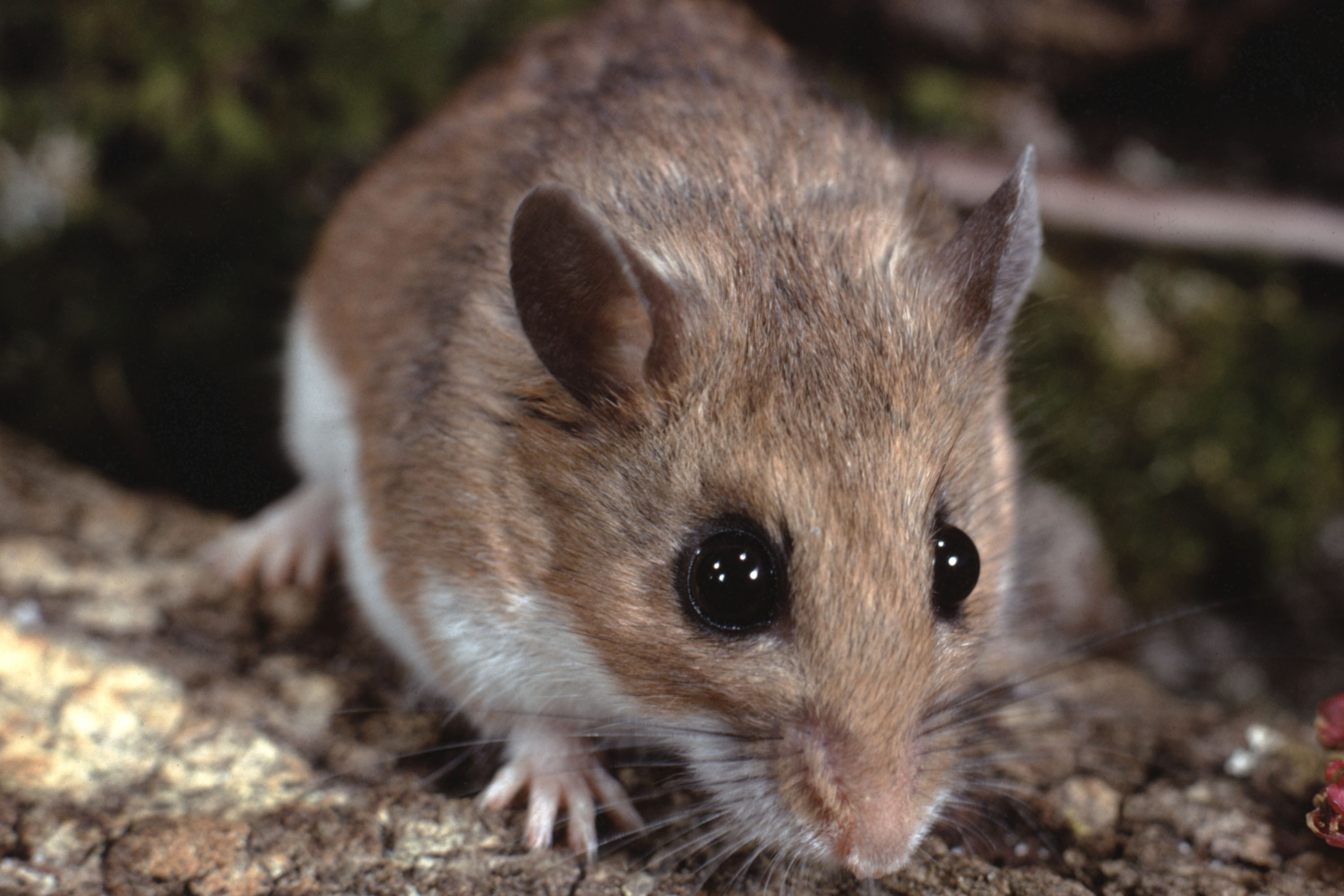Canyon mouse
(Peromyscus crinitus)

Description
The canyon mouse (Peromyscus crinitus) is a gray-brown mouse found in many states of the western United States and northern Mexico. Its preferred habitat is arid, rocky desert. It is the only species in the Peromyscus crinitus species group. Canyon mice eat seeds, green vegetation, and insects. They breed in the spring and summer. Females can produce multiple litters of between two and five young every year. Males do not mate with more than one female, and the homes ranges of females and males overlap. Canyon mice are nocturnal and are active through the year. They usually nest among or below rocks in burrows. Peromyscus is a genus of rodents. They are commonly referred to as deer mice or deermice, not to be confused with the chevrotain or "mouse deer". They are New World mice only distantly related to the common house and laboratory mouse, Mus musculus. From this relative, Peromyscus species are distinguished by relatively larger eyes, and also often two-tone coloring, with darker colors over the dorsum (back), and white abdominal and limb hair-coloring. In reference to the coloring, the word Peromyscus comes from Greek words meaning "booted mouse". They are also accomplished jumpers and runners by comparison to house mice, and their common name of "deer mouse" (coined in 1833) is in reference to this agility. The most common species of deer mice in the continental United States are two closely related species, P. maniculatus and P. leucopus. In the United States, Peromyscus is the most populous mammalian genus overall, and has become notorious in the western United States as a carrier of hantaviruses. The deer mouse came to the attention of the public when it was discovered to be the primary reservoir species for Sin Nombre hantavirus. A recent study in British Columbia of 218 deer mice showed 30% (66) were seropositive for Borrelia burgdorferi, the agent of Lyme disease. Ehrlichiosis and babesiosis are also carried by the deer mouse. While wild populations are sometimes studied, Peromyscus species are also easy to breed and keep in captivity, although they are more energetic and difficult to handle than the relatively more tame M. musculus. For certain studies, they are also favored over the laboratory mouse (M. musculus domestica) and the laboratory rat (Rattus norvegicus domestica).
Taxonomic tree:







